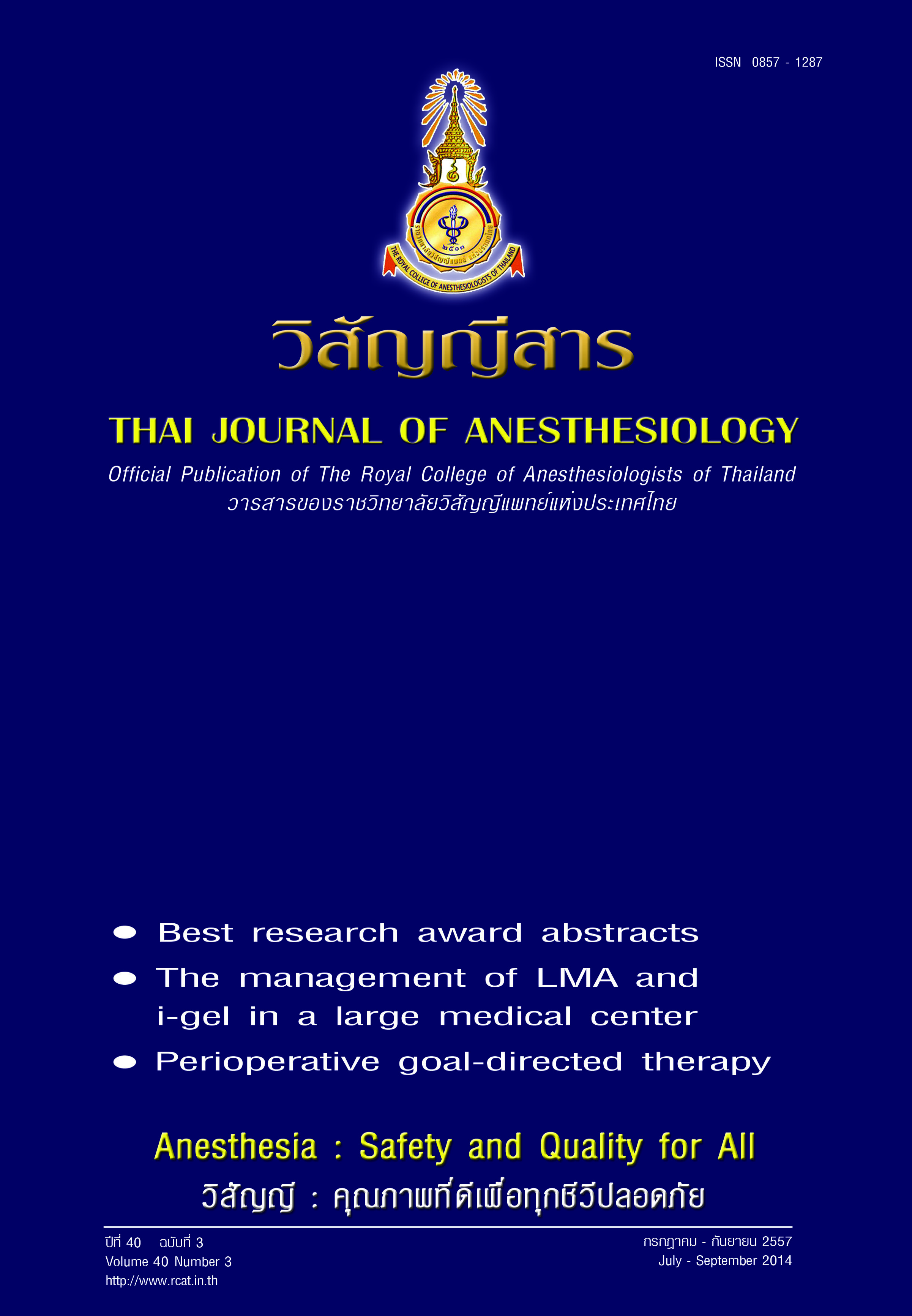Correlation of end - tidal CO2 measurement to arterial PaCO2 during CO2 inhalation for cerebrovascular reactivity (CVR) test
Main Article Content
Abstract
Background: The CO2 inhalation was used for evaluating the cerebrovascular reactivity in the patients with cerebrovascular disorders. There were different methods to perform CO2 inhalation. In our study, we designed the CO2 inhalation method, using the Bain circuit and the previously known concept of the correlation between the end - tidal CO2 (EtCO2) and partial pressure of carbon dioxide (PaCO2) in normal ventilation.
Objective: To study the correlation between the EtCO2 and the PaCO2 during CO2 inhalation in the patients with cerebrovascular disorders using the Bain circuit.
Methods: A cross - sectional prospective study was performed in 14 patients. The patients with cerebrovascular disorders who were sent for computed tomography angiography (CTA) of the brain received the CO2 inhalation (5% carbon dioxide in 95% oxygen) via the anesthetic mask using the Bain circuit for approximately 4 - 6 minutes until EtCO2 was 20% higher than baseline value. The EtCO2 and the PaCO2 were measured before (pre -EtCO2, PaCO2) and after the CO2 (post - EtCO2, PaCO2) inhalation.
Results: There were 14 patients who had brain CTA scans and CO2 inhalation. The mean of pre - EtCO2 was 35.29 mm Hg and post - EtCO2 was 42.64 mm Hg. The difference values of EtCO2 and PaCO2 was 2 -7.5 mm Hg. EtCO2 values did correlate with PaCO2 values significantly both in pre - CO2 inhalation (p = 0.024, r = 0.6) and post - CO2 inhalation (p < 0.001, r = 0.9). Four patients had abnormal cerebrovascular reactivity when received CO2 inhalation. Two of four patients had cerebral revascularization subsequently and the other two patients had clinical observation by a neurosurgeon.
Conclusions: There was a correlation of EtCO2 and PaCO2 during CO2 inhalation for cerebrovascular reactivity test in the patients who had cerebrovascular disorders.


